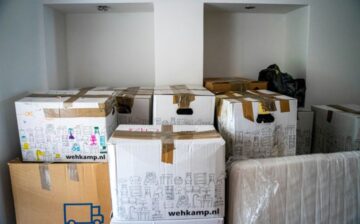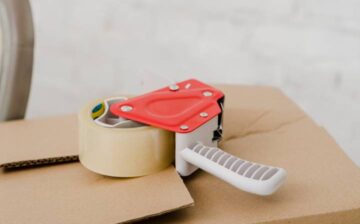
Relocating can be an overwhelming endeavor, often characterized by a flurry of tasks, decisions, and considerations. The logistics, the emotional adjustments, and the sheer volume of items to be moved can make it a daunting task. Amidst this chaos, managing work commitments might seem like an added burden. However, the rise of remote work has introduced a silver lining to this predicament. The inherent flexibility of remote jobs offers the privilege of moving locations with relatively less stress about workplace commitments. You’re not tethered to a physical office, granting you the latitude to shift bases as and when required. Nevertheless, it’s crucial to strike a balance. By scheduling time off specifically for the move, you can ensure minimal disruptions to your professional responsibilities. A meticulously crafted plan can be the key – one that allows you to manage both your moving boxes and your digital meetings, ensuring neither sphere of life suffers during the transition.
Planning is the first step to follow any major life decision
Relocation is more than just a physical change of address; it’s an intricate ballet of logistics, emotions, and timing. The first step, deciding to make the move, opens the door to what many regard as the real challenge: exhaustive and systematic planning. The creation of a thorough timeline can be equated to having a trusted compass in an unfamiliar terrain. Such a timeline serves a dual purpose. From a professional standpoint, it keeps employers informed, setting clear expectations about your accessibility during the transition. On a personal level, it acts as an anchor, providing clarity and structure in the whirlwind of tasks.
Sketching out key milestones, such as the main moving day, the handover of property keys, and logistical matters like wifi setup, is vital. But a holistic plan doesn’t stop there. It delves deeper, factoring in days dedicated to packing, possible house viewings, and even incorporating contingency days to accommodate any unexpected hiccups. By addressing these minutiae, you pave the way for a relocation experience that’s not just manageable, but also efficient and relatively stress-free.
Communication is key
The age-old adage that communication is vital holds immeasurable weight, especially in professional relationships. Whether it’s between friends, family, or an employee and employer, open dialogue fosters understanding and builds trust. Sharing decisions about major life changes, like relocating, isn’t merely about formal protocols but also about mutual respect. When you keep your employer in the loop about the ‘when’, ‘why’, and ‘how’ of your move, it demonstrates responsibility and consideration.
Furthermore, beyond the professional facade, we must remember that employers, too, are individuals with emotions, aspirations, and experiences. Many can empathize with the excitement, challenges, and stresses that accompany such significant life events. Being privy to an employee’s ambitions or personal reasons for a move might inspire and resonate deeply with them. As a result, many employers might proactively offer assistance, whether in the form of flexibility with deadlines, providing additional off days, or even adjusting the intensity of your workload. By communicating openly, you not only keep the professional gears running smoothly but also tap into the compassionate, understanding side of human nature.
Pack accordingly
For artists, their tools are an extension of their being, often essential not just for professional commitments but also as a source of personal solace and expression. As such, packing them away might be left until the very last moment, allowing for any spur-of-the-moment creative pursuits. However, if you’ve already coordinated with your employer and secured some time off for the move, you can start the packing process earlier. It’s of paramount importance to label each box meticulously, ensuring you can quickly locate your tools when setting up in the new location. In the hustle and bustle of relocation, misplacing a single essential item can be more than just inconvenient—it can directly impact your professional efficiency. To mitigate such risks, a prudent approach is to consolidate all job-related equipment into designated boxes. While an individual item can easily be overlooked, an entire box, marked and set aside, stands a much lesser chance of being misplaced during the transition.
Don’t stress
With your remote employee time tracking on pause, you also need to give yourself a little room for a breather. It won’t help anyone – yourself or your employer – if you are stressed out and burnt out from the stress of moving. While everyone strives to be as efficient and competent as they can be, the fact is that accidents will happen, mishaps are all too common, and the best way to deal with these situations is to roll with the punches. If your boss or client is giving you grief about not submitting your work on time, just take a deep breath and deal with it when you’re in a calmer state of mind. However, with these tips: planning, communicating, and packing properly, there’s a small chance of having things go awry.
We hope you found this blog post on Balancing Moving Boxes and Zoom Calls: A Guide to Seamless Relocation While Working Remotely, useful. Be sure to check out our post on Choosing the Right Moving Boxes and Supplies for more great tips!
Have Experience in the Moving Industry? Want an Additional Income Stream? Work With All Around Moving!
Join our program Moving Relocation Consultant! Put your experience in the moving industry and drive to good use. Profit as a moving consultant. Click here to learn more.





